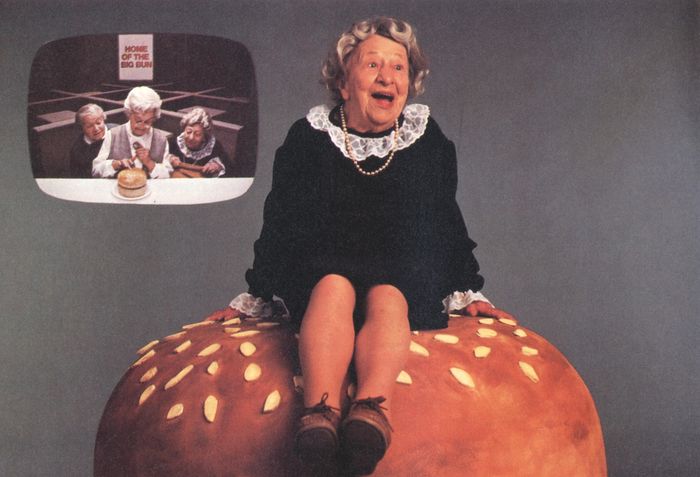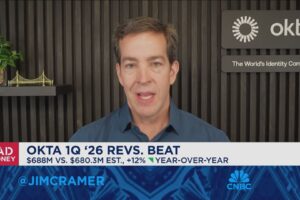Stephanie O’Dell was working as a fashion stylist about six years ago when she noticed the huge void in advertising and marketing aimed toward older women.
Driven by her own curiosity, she started a blog and talked to 100 women about their lives, fashion and everything in between.
“I knew if I saw these women in advertising, I would feel differently about aging,” said O’Dell, now 60.
When she saw the purchasing power behind the demographic, she knew she was onto something. She started her own modeling agency for women over 50, called Celebrate the Gray, which now boasts more than 200 models and works with hundreds of social-media influencers.
While O’Dell applauds some national brands such as Target TGT, +1.86% and the Gap-owned Athleta GPS, -1.29% for their inclusive advertising campaigns, she said many brands use younger models with unlined faces to sell products like anti-aging creams, which she said reinforces negative stereotypes about aging.
“The big brands I talked to want an immediate return on their investment. But the 50-plus woman isn’t going to buy something because of one model in one ad,” O’Dell said.
According to AARP, consumers age 50 and older contribute $8.3 trillion to the U.S. economy, or 40% of the gross domestic product, each year. In 2030, when the first of the millennial generation will turn 50, that age group will contribute $12.6 trillion to the economy.
And in terms of direct spending, 56 cents of every dollar spent in the U.S in 2018 was attributable to the 50-plus population, and this share is set to increase to 61 cents by 2050, AARP said.
“The decision makers have this perception of age, but the 50-year-old in their head isn’t the 50-year-old in real life. There’s a lot of education that needs to be done,” O’Dell said. “The imagery hasn’t caught up with the reality.”
“ ‘We need to expand marketing beyond the medication, hygiene and safety products that advertisers think old people need.’”
A lack of age diversity in advertising and marketing reinforces stereotypes and creates a continuing cycle of cynicism and prejudice, said said Tracey Gendron, executive director of the Virginia Center on Aging and chair of the department of gerontology at Virginia Commonwealth University.
“The media as a whole has reach and is very powerful. It has a huge impact,” she said.
“It’s bad because it robs us of our health, our happiness and our longevity,” Gendron noted. “It affects younger people, because ageism against young people feeds their dislike of older people rather than building positive, robust relationships and perceptions.”
“We need to show older people in everyday activities. We still have this grandmother/grandparents model that’s assuming all old people are grandparents,” Gendron said. “We need to expand marketing beyond the medication, hygiene and safety products that advertisers think old people need.”

Wendy’s ‘Where’s the beef?’ TV ad from the 1980s featured three older women who were unhappy with the size of their burger.
Advertising Archive/Courtesy Everett Collection
Ken Dychtwald, chief executive and founder of the consulting firm Age Wave, said advertising geared toward older adults has improved from what it was in past decades, when older people were often portrayed as buffoons, like the women in the iconic Wendy’s “Where’s the beef?” ad or Mr. Whipple, who was obsessed with squeezing Charmin toilet paper.
“ ‘We’re beginning to see the birth of older people as real people in advertising.’”
“We’re beginning to see the birth of older people as real people in advertising,” Dychtwald said. “But the advertising industry is ignorant and ageist and really doesn’t understand the older adults and doesn’t include them in the discussion.”
But it’s a big mistake to ignore this consumer, Dychtwald said.
“People over 50 have time and money and the desire to try new things. That’s something the advertising industry has never encountered before. But the ad industry doesn’t have much understanding of this older adult,” Dychtwald.
Women over 50, in particular, are powerful consumers who are buying for themselves, their kids and their parents. As “chief consumption officers,” women make direct purchasing decisions every day regarding matters including health, finances, housing, travel and leisure. Despite this, women 50 and over are often overlooked, AARP said.
“We have a ways to go. We still have these other stereotypes rampant in society,” Gendron said. “Older women are not portrayed as often as older men. And the older people who are depicted are white Caucasian. There’s a lack of diversity.”
O’Dell started Celebrate the Gray after working in sports marketing and then leaving the workforce to be a full-time parent. She’s now on a mission to change the way older people are depicted in advertising.
“I always felt like there was something bigger for me to be doing, but I didn’t know what it was,” she said. “When I had this idea about Celebrate the Gray six years ago, I realized I didn’t want to hit my 60s and say ‘Why didn’t I see it through?’”






